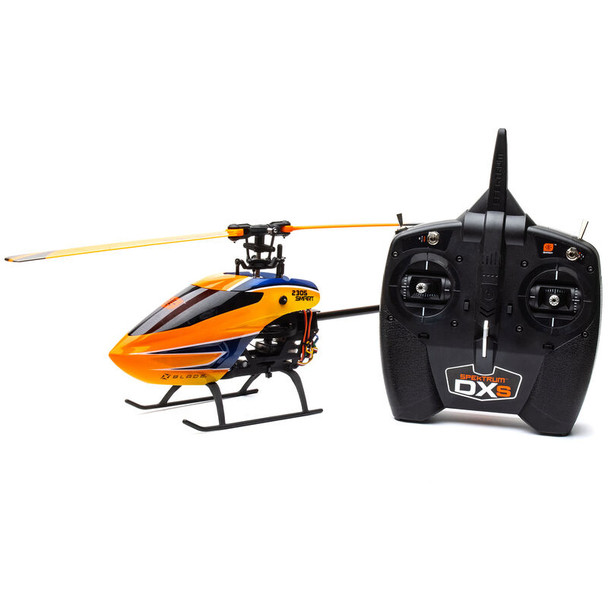The Best Strategy To Use For Helicopter Replacement Parts
Wiki Article
The smart Trick of Helicopter Replacement Parts That Nobody is Discussing
Table of ContentsThe Buzz on Helicopter Replacement PartsWhat Does Helicopter Replacement Parts Mean?The 4-Minute Rule for Helicopter Replacement PartsThe 20-Second Trick For Helicopter Replacement Parts

With this joint, when one blade flaps up, the other flaps down. Waving is caused by a phenomenon called dissymmetry of lift. As the airplane of turning of the rotor blades is tilted and the helicopter begins to move on, an advancing blade and also a pulling back blade ended up being well established (on two-bladed systems).
When blade turning reaches the factor where the blade comes to be the retreating blade, the additional lift is lost as well as the blade flaps downward. Totally expressed blades blade systems give joints that allow the blades to move fore as well as aft, as well as up as well as down.
When first beginning to rotate, the blades delay until centrifugal pressure is completely created. As soon as revolving, a decrease in speed triggers the blades to lead the primary blades center up until forces come right into equilibrium. Continuous fluctuations in blades blade rates trigger the blades to "hunt." They are cost-free to do so in a completely articulating system because of being installed on the vertical drag hinge.
Little Known Questions About Helicopter Replacement Parts.
Toward that end, the use of elastomeric bearings in main blades systems is boosting. They additionally do not need regular lubrication, which decreases upkeep.These are centers and also hub elements that are constructed of sophisticated composite materials. They are made to occupy the forces of blade hunting as well as dissymmetry of lift by flexing. Because of this, lots of hinges and bearings can be removed from the tradition primary rotor system. The result is an easier rotor mast with reduced upkeep as a result of fewer relocating parts.
[Number 7] Ordinarily, helicopters have between two and also 7 primary rotor blades. These blades are usually constructed from a composite structure. The huge turning mass of the primary rotor blades of a helicopter generate torque. This torque increases with engine power and attempts to rotate the body in the contrary direction.
Managed with foot pedals, the countertorque of the tail rotor have to be regulated as engine power degrees are altered. This, in turn, browse around these guys alters the amount of countertorque, and the airplane can be turned concerning its vertical axis, permitting the pilot to manage the direction the helicopter is dealing with.
The Definitive Guide to Helicopter Replacement Parts

This low pressure triggers a pressure counter to the torque generated by the major rotor. In addition, the rest of the air from the follower is sent via the tail boom to an air vent on the aft left side of the boom where it is removed. This action to the left triggers a contrary response to the right, which is the instructions required to respond to the primary rotor torque.
It can be relocated in any kind of instructions to turn the airplane of rotation of the rotor blades. This triggers the helicopter to relocate in the direction that the cyclic is relocated. As stated, the foot pedals control the pitch of the tail rotor blades consequently stabilizing main blades torque. Numbers 11 and also 12 illustrate the controls discovered in a typical helicopter.

Several blades designs as well as configurations have been carried out over time. Solitary major blades helicopters are the most usual sort of helicopter They require an anti-torque tool (tail rotor or various other anti-torque system) to counteract the twisting energy created by the primary blades, which is powered by one or even more engine(s).
See This Report on Helicopter Replacement Parts
One of the most typical anti-torque device is a tail rotor, which is designed to compensate the torque produced by the primary blades. EC25 single primary rotor helicopter A tandem rotor helicopter has 2 major blades systems and no tail blades. Usually the rear rotor is mounted at a higher setting than the front blades, and also both are created to avoid the blades clashing, should they bend into the other rotor's path.The layout of the drive and control system are extra complex than the among a single main blades helicopter (helicopter replacement parts). Ch47 Chinook helicopter with tandem rotors Coaxial blades are 2 major rotors placed on one mast, sharing the very same axis of turning however transforming in contrary instructions, one on top of the other.
The helicopter will yaw to the left if the clock smart rotating blades creates more lift, and also it will yaw to the right if more lift is generated by the counter-clock smart rotating blades. The drag generated by the rotors is quite huge due to the interference of airflows, so these helicopters do not usually have a high cruising speed.
Report this wiki page